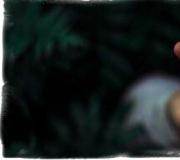In Photoshop, draw a line of a certain length. Drawing lines in Photoshop
Of course, one of the simplest and most frequently used elements in drawing is the line. Program Adobe Photoshop is no exception. Especially if you plan to seriously study the field of website design.
One of the advantages of the Photoshop program is the interchangeability of actions. You can achieve the same result with many different different ways. Now we will study several options for command sequences with which we can make a line in Photoshop.
Let's start by creating a new document. A document of 1000 by 1000 pixels is quite suitable for us. Detailed description Creating a new document in Photoshop can be found here.
Let's start with the line tool. We will find it on the tank panel.
Now let's set the characteristics of our future line.
Let's set the line thickness. I decided that a thickness of 4 pixels would suit me. If you wish, you can choose its style. I'll make do with the simplest ones.

Let's decide on the color. You will also find the primary color selection icon on the sidebar. By clicking, a window for choosing a color is called up.

Well, that's it now! Let's draw. Click on the work area and draw a line with the mouse.

Now our line is a smart object. You can turn it into a regular layer in the layers window using the “rasterize layer” command.

The line is ready. As you can see, drawing a straight line in Photoshop is very easy. We have discussed an elementary method, which, despite its convenience, has a number of limitations. Let's take the second one apart and draw a line using the pen tool.
It should be noted that in in this case It’s worth changing the settings of your brush or pencil to the appropriate ones in advance, because your line will repeat these outlines. Therefore, let's set up the pencil tool together. Select it in the sidebar. And click on the work area.

Set the following pencil settings. How to choose a color is mentioned above.

In the sidebar, look for the pen tool.

We make two clicks on the work area. It should be noted that if you want to make the line smooth and strictly horizontal or vertical, hold down the shift key while clicking.

Click on the line with the left key. In the drop-down list, select the “outline outline” command.

We trace the outline and click again with the left mouse button. Select the “delete contour” command.


So, the line is ready! In just five minutes we learned two ways to draw straight line in Photoshop.
Parallel lines and a grid are elements that bring order and rigid structure to a design solution. Lines set the direction for the eye as it fleetingly glides across the picture, emphasizing the surfaces, giving volume to the image. Light shading instead of filling creates the effect of weightlessness and airiness of the object.



It is easier to create parallel lines, a grid of rectangular cells, and a lattice in vector graphics programs such as Adobe Illustrator, for example. You can download a suitable texture or ready-made clipart.
But there is not always time to look for the right textures. Drawing a straight line is easy - draw with any drawing tool while holding down the Shift key. It's difficult to draw multiple lines equally spaced to create a grid, for example. But solving the problem of creating parallel lines in Photoshop is not at all difficult.
1 way.
The fastest way to create parallel lines is to use styles.
Draw a straight line with the Pensil tool (to make the line straight, hold down the Shft key).

Among the built-in Photoshop styles There are Dotted Strokes styles (dash-dotted strokes). Select these styles using the Styles palette menu: Window > Styles.

From the style sets, choose the White 1pt 2pt-Spaced Dotted No Fill style or another one if you prefer.

Let's get a line of points.

This line needs to be stretched in width and obtained from the points of the strip. But if you do this right now, you will get a rectangle with a dotted outline. Here's a simple trick: create a new empty layer above the dotted line layer and merge the two layers (select these layers in the Layers panel and do the Merge command).

After that, simply stretch the line wider with the command Edit (Editing)>Transform (Transform).

If you create a new layer above the layer with lines, fill this layer with a gradient fill and apply the menu command from the layers panel Create Clipping Mask to it, you will get this rainbow stripe.

And using the Edit > Transform > Warp command allows you to get interesting effects.

Method 2.
Parallel lines can be created using gradients. The disadvantage of this method is significant - you must first create a gradient using the gradient editor. If you don’t know anything about working with the gradient editor, go here:
The advantage of this method is that, firstly, you can create a striped gradient, save it and use it always, secondly, you can create multi-colored gradients, gradients with blurry or clear transitions from the line color to the background, you can create double, triple lines with different spaces between them. Or download ready-made ones or
Creating a gradient to draw parallel lines is easy. Open the gradient editor and add color markers to in the right positions(just click the mouse in the right places, set the color and distance in the appropriate fields.). The Location field specifies the marker indentation in % from the left edge; the distance between markers is the distance between lines.

Small markers next to the color marker determine how blurry the line is. Try moving them closer to the line and see the result.

Handles above the gradient bar control the transparency of the gradient areas. White markers indicate transparent areas (Opacity is 0). This gradient is convenient for drawing on a ready-made background:

An example of using this gradient:

And don’t forget that there are different gradients - diamond-shaped, radial, mirror, which allows you to create different shapes with one easy movement:

3 way.
To begin, draw one line on a new layer.

Go to the Actions palette, create new operation(Line, for example), click the record button and do simple steps: Duplicate the line layer and move it up or down to the desired distance. The job is done, click the Stop recording button. It should look something like this:

After that, press the triangular Play recording button as many times as you need lines.

As a result, the image has many layers with lines. If you are happy with the result, combine the layers with lines into one layer.
Duplicating the lines layer and then rotating the duplicate at right angles or any other angle makes it easy to create a mesh.
And applying styles - effects:


As you probably already understood, the Word text editor is a multifunctional program, and, perhaps, at first it is very in vainly underestimated by many users. Of course, in some cases it is still better to use the same Excel, but, in general, Word is able to cope with many tasks.
With its help, you can always draw up a document beautifully, making it seem deliberately businesslike, or, conversely, making it informal. You can work with tables, change the text style, etc. In addition, the Word interface is thought out to the smallest detail; it allows you to find in a matter of seconds necessary tool for work. By the way, you can even draw a line in Word if you suddenly need it. Actually, we’ll talk further about how to draw a line in Word.
Method one
In fact, in almost any controversial situation that arises in Word, there are several options for getting out of it. And this is very good, because each user can choose what he likes and suits him best. So, let's start with the first method, in my opinion, very simple and understandable to everyone.
Let's imagine that you have typed some text and you need to highlight it with an underscore. To do this, we do this: select the text, then in the “Home” tab on the toolbar we find the “Font” block. There are three buttons: bold, italic and underlined, and if you also need it, you can do this through another menu. Accordingly, just click on the last button, as shown in the screenshot below.
Method two
This method is even more functional. It will come in handy in situations when you want to draw one or more lines in any area of the sheet, and it doesn’t matter whether it’s horizontal, vertical, crosswise, or something else. Do this:
- There is an "Insert" tab in the toolbar, open it.
- There is an “Illustrations” block, which has a “Shapes” button.
- By clicking on it, find a straight line among the proposed ones. Click on it the moment you need to insert a line into the text. Note that you will have to specify two points: where it will start and where it will end.

Method three
This text editor provides another tool that is useful for quick creation lines. To draw a line, place the cursor in in the right place, then click on the “Borders” button, which is, again, in the “Home” tab. After this it should appear horizontal line across the entire width of the sheet. 
I hope you liked one of these ways to draw a line in Word. Choose any one and feel free to experiment!
Video to help
You will learn how to draw doodling when you understand its components - the basic elements that make up any drawing. The first lesson consists of exercises with straight lines that make up geometric patterns. The most important thing when working with repeating lines is the distance between the lines and their thickening. In the second lesson we will look at curved, wavy lines.
Most doodles and zentangles are based on curved lines. In this course we study doodling for beginners, the patterns of these lessons are simple, but they are important because these are the basic building blocks that create the foundation for further knowledge of increasingly complex patterns. And the basis of complex patterns will be our same lines and dots :)
For this activity you will need paper, preferably unlined. Regular printing paper is suitable for practice. And for the final drawings, you can keep a separate notebook with thick paper or a folder with drawing paper. Thick paper will be especially important at those stages when we include watercolor painting in the lessons.
Also, for drawing you will need one liner (0.2 - 0.3) (or a thin marker, or gel pen). If you don’t have any of this at hand, and you want to practice right now, then start drawing with any pencil or regular ballpoint pen.
Exercise 1.
In this exercise we will work on drawing wavy lines at specific intervals. Here the ability to control the distance between lines is developed, and to make certain places changes that will ultimately create an interesting optical effect.
- Let's draw curved line, add parallel lines, gradually increasing the step between them.
2-5. Draw a wave with deep bends, add lines on each side at an equal distance. The lines are equally spaced, so the design remains flat. We will use this technique in the coming lessons when we draw different variants ribbons

exercise 1
- This step of the exercise is similar to the previous ones, but here we create not a flat one, but three-dimensional drawing. We start with an arcuate line with a slight curvature. We draw the next line in parallel, but in the area of curvature (this area is marked in red), we draw the line closer to the first. An optical recess is formed. In the next steps, we slightly increase the distance between the lines on the “wave”, leaving a small distance at the “deepening”. This results in a curved plane.
Exercise 2.
In this exercise we will learn how to doodling with an optical effect. Here is one of the options for drawing volumetric “tubes”. As you can see, even without special effects - shadows and highlights - the grooves look voluminous, which is achieved simply by curved lines.
1-3. The basis is given wavy line. Then you can go in two ways: draw several base lines at once, and then fill in the resulting paths (as in my example), or draw 2 lines, fill the space between them, and then add 1 line and, accordingly, 1 tube each. 
4-6. After the base lines outlining the boundaries of the “tubes” have been created, we begin to draw parallel lines in the shape of a semicircle. Drawn transversely, they give the tube a roundness.
Here is an example of such linear drawings. The interesting optical effect created by curved lines is popular not only in zenart, but is also very characteristic of the op art style, the main concept of which is optical illusions.

Exercise 3.
In this block we make different thickenings, approximately the same as on straight lines in.
- Here we show how you can create a ribbon effect by thickening the line one by one, then the other.
- -3. Draw some wavy lines. First, work on widening the lines on one side. Then, based on the same parallel lines, make a pattern with different thickenings.

Next, we will work with the same base of several parallel wavy lines and make a mesh pattern. One of the lessons is entirely devoted to “grids”, which must be present in any doodling course for beginners. Schemes of such patterns are basic. The mesh pattern is one of the main patterns for constructing an ornament.
- Draw several curved parallel lines. Between them we place diagonal straight lines in a checkerboard pattern.
- We soften the corners with lines, as if cutting them off.
- We paint over the voids formed in the corners. The result was a grid of straight and curved lines. This pattern is good for zentangle balls and can be transformed and detailed in different ways.
Exercise 4. This exercise is more experimental, since you should not repeat the pattern, but create your own fragments of patterns. The diagrams here are for sample purposes only, as an illustration of the task.
1-3. Draw straight and curved lines from one point
4-5. Draw straight and curved lines from different points. We connect the lines to get the effect of bulges and indentations. Experiment to understand what effects you get and how they can be used in your compositions.
- We divide the area of the drawing into sectors. In each sector we place a point anywhere from which we draw straight and curved lines.

We have done several exercises that will help you understand how to draw doodling. Now it remains to consolidate everything you have learned in the final drawing. If you still have some strength left, you can do it right now, or put it off for another time to make a beautiful drawing with new strength and neatly. I advise you to always do the final compositions before moving on to the next lesson. At the end, you will have 25 drawings, which you will use to track the process and see the result!
Final composition “Doodling with wavy lines”
We create a composition using several used elements.
For convenience, we limit the space to the outer boundary. You can draw it by hand in a free style, draw it using a ruler, or just take some object and outline it. In my case, I had my phone at hand.
Then you can divide the area into sectors and place elements in the sectors. Or you can start from a certain place and move forward, filling the entire area with patterns. Proceed as you like and try to include different worked out versions of the 1st and 2nd lessons into the composition.

That's all for today. I hope you found this lesson interesting and useful. You can send your final compositions to the proposed news on the wall of our club on VKontakte http://vk.com/zenarts, of which I am also a member.
In this tutorial I will show you how to create beautiful abstract lines, which will be useful in the design of your work. This tutorial is perfect for beginners.
This is what the final result looks like:
Step 1. Create a new document sized 800x800 px, fill the background with black. Create a new layer above the background one, press the P key to activate Pen Tool (Feather). Create a line as in the screenshot below:

If you can't draw the curve, that's okay. To do this, hold down the ALT key and drag the end of the curve to edit its shape:

Press B to activate Brush Tool(Brush), select a 1 px brush:

In the window Color Picker(Color selection) select the required color:

Activate again Pen Tool(Pen) (P), then right-click on the created curve and select Stroke Path(Outline Stroke):

Choose Brush(Brush) from the drop-down menu, make sure that the option Simulate Pressure(Simulate pressure) is active, and click OK:

And we get this beautiful curve:

Step 2. Using the process described above, we create three more lines. Make sure that:
- each line is on a separate layer;
- for the first line, the brush size is 2 px, the second - 3 px, the third - 4 px;
- reduce the opacity of the layers to 80%, 60% and 40%.



We adjust the location of the lines and get the following result (4 lines on 4 layers):

Step 3. Create a group "Lines" Layer - New - Group(Layer - New - Group) and move all 4 layers with lines into it. Duplicate the group once and merge the copy of the group into one layer (CTRL+E). Reduce the opacity of the new layer to 70% and move the lines lower and to the left to create the effect of depth:

Continue duplicating the layer to create more lines:

Now we need to add some color to the lines. To do this, use an adjustment layer Layer - New Adjustment Layer - Hue/Saturation(Layer - New Adjustment Layer - Hue/Saturation) for layers with lines (don't forget to create a clipping mask for the adjustment layer CTRL+ALT+G).

Choose any color you like:

We continue to add more colors. You can use Free Transform(Free Transform) (CTRL+T) to adjust the angle of the lines:

We also adjust the size of the lines:

Step 4. Now let's add some gray lines. To do this we go Image - Adjustments - Desaturate(Image - Adjustments - Desaturate) or SHIFT+CTRL+U to desaturate one of the layers:

Mixing the gray lines together with the rest:

And we get the following result:

Step 5. Almost finished. Now we combine the layers with the lines that we created into one (CTRL + E), then duplicate them, rotate them, change their position:

Let's add abstract dots around the lines to diversify the work. To do this, set up a brush as shown below (press F5 to bring up the brush parameters window).




